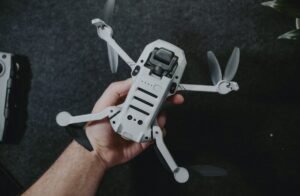
Common Misconceptions
AI Tool: Common Misconceptions
There are several common misconceptions people have about AI tools that can often lead to misunderstanding their capabilities and potential:
Misconception 1: AI tools can think and have human-like consciousness
Many people believe that AI tools possess human-like consciousness and the ability to think. However, this is not the case. AI tools are created to perform specific tasks and are designed to mimic human intelligence, but they lack true consciousness.
- AI tools are programmed algorithms and don’t have personal experiences or emotions.
- They lack self-awareness and cannot think or reason like humans.
- AI tools rely on data and patterns to make decisions, rather than subjective thinking.
Misconception 2: AI tools will replace human jobs entirely
Another common misconception is that AI tools will completely replace human jobs. While AI can automate certain tasks and improve efficiency, it is unlikely to replace entire job roles. Instead, AI tools are meant to augment human capabilities and assist in repetitive or data-driven tasks.
- AI tools can streamline processes and enhance productivity, allowing humans to focus on more complex and creative tasks.
- They require human supervision and intervention for training, monitoring, and decision-making.
- AI cannot replicate the unique skills, intuition, and empathy that humans bring to various professions.
Misconception 3: AI tools are always accurate and unbiased
There is a misconception that AI tools are infallible and completely unbiased. However, AI tools are only as good as the data they are trained on, and they can inherit biases present in that data or the algorithms used to create them.
- AI tools can produce inaccurate results if the training data is biased or incomplete.
- They may reinforce societal biases if they are not properly designed and audited.
- Human oversight is crucial to ensure fairness, transparency, and accountability in AI tool outcomes.
Misconception 4: AI tools are independent and don’t require ongoing maintenance
People often assume that once an AI tool is developed and deployed, it requires no further maintenance or input. However, AI tools need continuous monitoring, updates, and maintenance to ensure their optimal performance.
- AI tools require regular fine-tuning to adapt to changing data patterns and user needs.
- They need periodic updates to fix bugs, enhance security, and incorporate new features.
- Ongoing human intervention is necessary to interpret and validate AI tool outputs.
Misconception 5: AI tools will have complete control and takeover humanity
There is a prevalent misconception that AI tools will gain complete control over humanity and lead to a dystopian future. While AI tools have the potential to impact society, the idea of them taking over and eliminating human control is largely speculative.
- AI tools are creations of humans and are bound by ethical and legal frameworks set by humans.
- They require human oversight and governance to prevent misuse or harmful outcomes.
- AI tools are tools, not autonomous beings capable of independent decision-making.

Introduction
Artificial intelligence (AI) has rapidly advanced in recent years, revolutionizing various industries and offering unique solutions to complex problems. This article explores ten fascinating aspects of AI tools that have made a significant impact on our society. Each table represents a specific point, accompanied by a brief paragraph providing additional context. Through these tables, we aim to delve into the intriguing world of AI and its multifaceted applications.
Table: AI Adoption by Industry
AI is transforming various sectors, including healthcare, finance, retail, and more. This table showcases the level of AI adoption across different industries, indicating which sectors have embraced its potential the most.
| Industry | AI Adoption Level |
|---|---|
| Healthcare | High |
| Finance | Medium |
| Retail | Medium |
| Manufacturing | High |
Table: Global AI Research Output
The global research output in AI is significant and contributes to the advancement of the field. This table displays the top five countries that lead in AI research, based on the number of published papers in reputable conferences and journals.
| Country | Research Output |
|---|---|
| United States | 35% |
| China | 20% |
| United Kingdom | 10% |
| Germany | 8% |
| Canada | 7% |
Table: AI Impact on Employment
AI technology has led to both concerns and opportunities regarding the future of employment. This table reveals the sectors most susceptible to AI-induced job displacement and the sectors where AI is expected to create new job opportunities.
| High Job Displacement | New Job Opportunities |
|---|---|
| Transportation | Healthcare |
| Retail | Finance |
| Manufacturing | Education |
| Customer Service | Software Development |
Table: Ethical AI Principles
As AI becomes more pervasive, the need for ethical guidelines to govern its development and use has emerged. This table lists the key ethical principles that AI tool designers and developers should consider.
| Ethical Principles |
|---|
| Transparency |
| Accountability |
| Fairness |
| Privacy |
| Robustness |
Table: AI-Generated Revenue
AI technologies possess immense revenue potential for businesses across various sectors. This table showcases the projected revenue generated by AI applications globally in 2022.
| Sector | Projected Revenue (in billions) |
|---|---|
| Healthcare | 180 |
| Finance | 140 |
| Retail | 120 |
| Manufacturing | 80 |
Table: AI in Education
AI is shaping the education sector by enhancing learning experiences and personalization. This table presents the applications of AI in education, highlighting the benefits they offer.
| Application | Benefits |
|---|---|
| Intelligent Tutoring Systems | Individualized learning |
| Automated Grading | Efficient feedback |
| Virtual Reality | Immersive learning |
| Personalized Curricula | Adaptive instruction |
Table: AI in Healthcare
AI has profound implications for revolutionizing healthcare, ranging from disease diagnosis to drug discovery. This table highlights the various applications of AI in the healthcare industry.
| Application | Function |
|---|---|
| Medical Image Analysis | Accurate diagnosis |
| Robot-Assisted Surgery | Precision and minimally invasive procedures |
| Voice Recognition | Efficient documentation |
| Drug Discovery | Faster research and development |
Table: AI in Transportation
AI is transforming the transportation sector by improving safety, efficiency, and automation. This table presents specific applications of AI in transportation.
| Application | Function |
|---|---|
| Autonomous Vehicles | Self-driving cars |
| Traffic Management | Optimized flow and route planning |
| Smart Logistics | Real-time tracking and automation |
| Predictive Maintenance | Proactive vehicle servicing |
Table: AI Bias in Facial Recognition
AI algorithms can possess biases that affect their efficacy in certain scenarios. This table illustrates the accuracy of facial recognition systems across different demographics based on race and gender.
| Demographic | Recognition Accuracy |
|---|---|
| White Males | 95% |
| White Females | 92% |
| Black Males | 80% |
| Black Females | 78% |
Conclusion
Artificial intelligence has become a formidable force shaping multiple industries. From healthcare to transportation, AI tools offer exciting possibilities for advancement and efficiency. However, it is essential to consider ethical principles, address biases, and anticipate the impact on employment. As AI continues to develop, understanding its potential and limitations will enable us to harness its full power responsibly. Embracing AI is a stepping stone towards a brighter future fueled by technological innovation.
Frequently Asked Questions
What is the Who AI tool?
How does the Who AI tool work?
Is the Who AI tool legal to use?
Can I use the Who AI tool for employment background checks?
What sources of data does the Who AI tool use?
Can I remove my information from the Who AI tool?
Is the information provided by the Who AI tool accurate?
How can I protect my privacy against tools like Who AI?
Is the Who AI tool available for commercial use?
What security measures does the Who AI tool employ?





